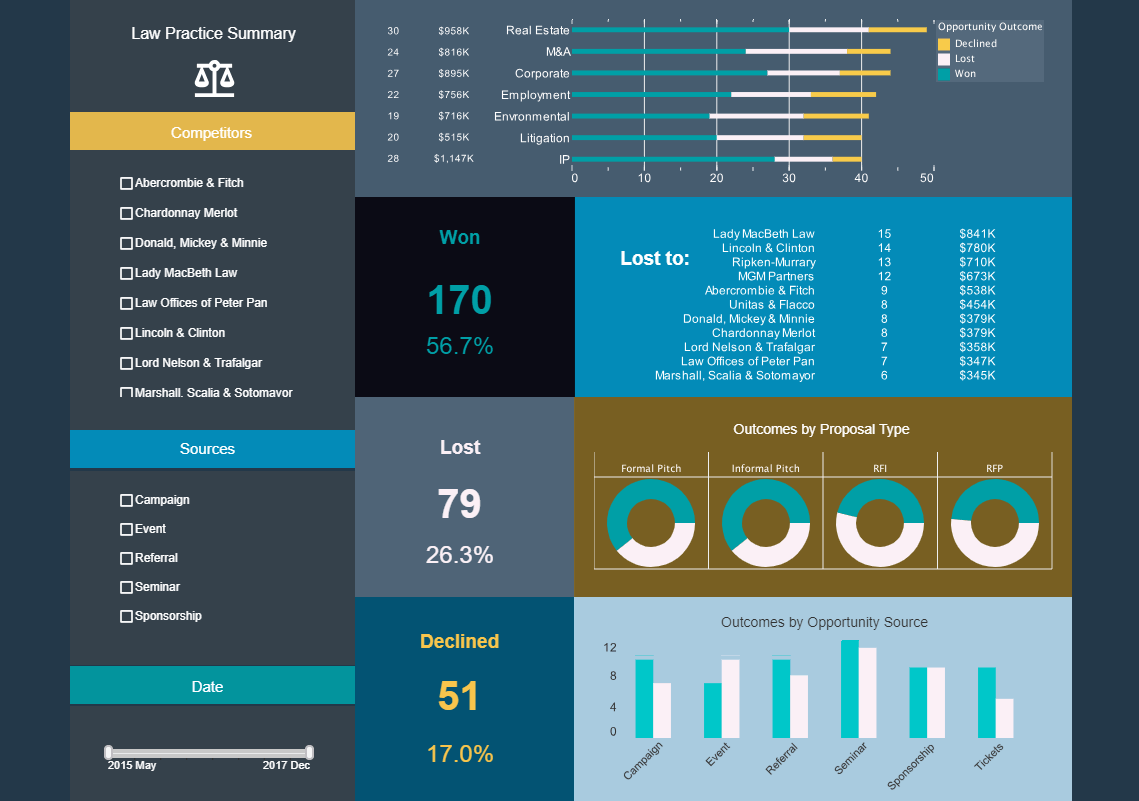
A SQL Server Performance
Dashboard Reporting Solution
with Maximum Self-Service
and Interactivity



Customer Service is the Best I've Encountered!
All the technicians are extremely knowledgeable, patient and will make every effort to accommodate your schedule and resolve the issue in a timely manner. - Jack from BOK Financial
Great Product and Easy to Use
I have been using this product for almost 2 years, and I find it simple to use and gives reliable results. I recently had a team trying to create a report for 2 weeks with another BI product. Since they couldn't build what they needed they came back to me. I was able to get it for them in less than a day with InetSoft. - Steven from Endurance Services
Explore Live Examples & Get Pricing Details
Sample Customers












What Are the KPIs and Metrics That Managers at Port Operations Track in Dashboards?
Managers at port operations typically track a variety of Key Performance Indicators (KPIs) and metrics to monitor and optimize the efficiency, safety, and profitability of their operations. These metrics are often displayed on dashboards for easy visualization and analysis. Here are some common KPIs and metrics along with their definitions and usefulness:
-
Vessel Turnaround Time: This metric measures the time it takes for a vessel to arrive at the port, unload or load cargo, and depart. It reflects the efficiency of port operations and can help identify bottlenecks in the process.
-
Berth Productivity: Berth productivity measures the number of containers or tonnage handled per hour at each berth. It indicates how efficiently resources are utilized and helps optimize berth allocation and scheduling.
-
Port Utilization Rate: This KPI measures the percentage of available port capacity that is being utilized at any given time. It helps identify underutilized or overutilized resources and optimize resource allocation.
-
Container Dwell Time: Container dwell time measures the amount of time containers spend at the port before being loaded onto a vessel or picked up by a truck or train. Longer dwell times can indicate inefficiencies in cargo handling and storage processes.
-
Terminal Operating Cost per TEU (Twenty-foot Equivalent Unit): This metric calculates the average operating cost per container handled at the port. It helps monitor cost efficiency and identify opportunities for cost reduction.
-
Safety Incidents and Lost Time Injuries (LTIs): Safety metrics track the number of accidents, injuries, and safety incidents at the port. Monitoring these metrics is crucial for ensuring the safety of workers and minimizing operational disruptions.
-
Cargo Throughput: Cargo throughput measures the total volume of cargo handled at the port over a specific period, typically measured in TEUs or tons. It provides an overview of port activity and helps forecast future demand.
-
On-time Performance: On-time performance measures the percentage of vessels, trucks, and trains that arrive and depart from the port on schedule. It reflects the reliability of port operations and can impact customer satisfaction and supply chain efficiency.
-
Customer Satisfaction Score (CSS): CSS measures the satisfaction levels of port customers, including shipping lines, freight forwarders, and cargo owners. It provides valuable feedback for improving service quality and customer experience.
-
Environmental Impact Metrics: Port operations can have significant environmental impacts, including air and water pollution, noise, and habitat disturbance. Tracking environmental metrics such as carbon emissions, energy consumption, and waste generation helps identify opportunities for sustainability improvements.
How Does Analyzing Big Data Benefit Port Operations?
Analyzing big data can bring several significant benefits to port operations by enabling better decision-making, improving efficiency, enhancing safety, and optimizing resource utilization. Here's how analyzing big data can benefit port operations:
-
Optimizing Berth Allocation and Scheduling: By analyzing historical data on vessel arrivals, departures, and cargo volumes, port operators can optimize berth allocation and scheduling to minimize congestion, reduce turnaround times, and maximize throughput.
-
Predictive Maintenance: Analyzing data from sensors and IoT devices installed on port equipment and infrastructure can enable predictive maintenance, allowing port operators to identify potential equipment failures before they occur, minimize downtime, and optimize maintenance schedules.
-
Cargo Flow Optimization: Big data analytics can help optimize the flow of cargo through the port by analyzing factors such as container movements, storage capacities, and transportation routes. This enables port operators to streamline cargo handling processes, reduce dwell times, and improve overall efficiency.
-
Enhancing Safety and Security: Analyzing data from video surveillance cameras, sensors, and other monitoring systems can improve safety and security at the port by identifying potential risks, detecting unauthorized activities, and enabling proactive interventions to prevent accidents, theft, and security breaches.
-
Real-time Decision Making: Big data analytics enables port operators to monitor operations in real-time and make data-driven decisions on issues such as berth assignments, resource allocation, and traffic management. This agility helps optimize operations and respond quickly to changing conditions and unexpected events.
-
Supply Chain Visibility: Analyzing big data from across the supply chain, including transportation networks, inventory levels, and demand forecasts, provides port operators with greater visibility into supply chain dynamics. This insight enables better coordination with shippers, carriers, and other stakeholders, reducing delays and improving reliability.
-
Environmental Sustainability: Big data analytics can help port operators reduce their environmental footprint by analyzing factors such as energy consumption, emissions, and waste generation. By identifying opportunities for optimization and implementing sustainable practices, ports can minimize their environmental impact and comply with regulatory requirements.
-
Customer Insights and Service Improvement: Analyzing data on customer preferences, behavior, and satisfaction levels enables port operators to gain valuable insights into customer needs and expectations. This information can be used to tailor services, improve customer experience, and build stronger relationships with port users and stakeholders.
-
Risk Management: Big data analytics can help port operators identify and mitigate operational risks, such as supply chain disruptions, weather-related delays, and geopolitical uncertainties. By analyzing historical data and modeling potential scenarios, ports can develop risk mitigation strategies and enhance resilience against various threats.